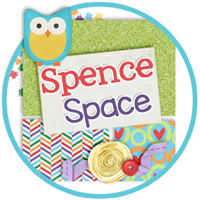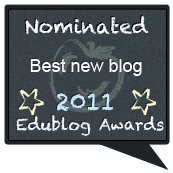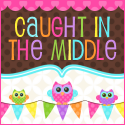So it's almost Thanksgiving and you have one of those shortened weeks burdened with play practice and pressure to keep the homework load to a minimum. Several kids will miss class due to family travel and so you are looking for a low-stakes but meaningful activity to discuss Thanksgiving. The kids have been making paper pilgrim hats since they were in kindergarten, so what is there to do?
Here are a few ideas, some of which I will be trying with my students over the coming days:
Thanksgiving Placemats
The reality is that Thanksgiving day pretty much entirely revolves around the food. Why not bring the facts and meaningful conversation to the food?
Students can use either Microsoft Word or Publisher to design a placemat on 11" x 17" paper. They can include authentic pictures and facts, as well as thought-provoking discussion questions for conversation at the dinner table. Most larger color laser printers will accommodate this size paper, so you can print a set of four placemats for each student. Finally, they can be made even more durable with a quick run through the laminator.
Two Thanksgivings
It just so happens that our study of Native American cultures perfectly aligned with the Thanksgiving holiday this year. I wanted to make sure we addressed the historical and cultural aspects of the holiday before launching into the five-day weekend.
In the past, I have written about using text-rendered poems as a tool for summarizing and capturing main ideas. I decided to have the students read two different perspectives of the Thanksgiving story and create a text-rendered poem of each. The catch was that each of the two groups were unknowingly reading two different stories. At the end of class, they presented their poems and discussed the differences between the stories. Both were a little extreme, one from a very positive, traditional perspective and the other from a very negative, more controversial perspective.
So what's the truth? Perhaps it's not possible to really know. There are certainly tragic elements to the story, but there is also that original unity of different cultures. We cannot know which message was truly in the hearts of those figures in history who promoted and promulgated the holiday, so I left it to the students. What will you celebrate when you sit down to Thanksgiving dinner? What should you remember? How should you recognize the tragedy while also celebrating the message of thanks and unity?
- - - - - -
For our positive interpretation, I used History.com's Thanksgiving at Plymouth article from their website. For the less cheery perspective, I used Susan Bates's The Real Story of Thanksgiving. There are plenty of sources out there, however, so it is easy to find two stories that suit the ability levels and readiness of your group. Bates's story does include some violent descriptions, so teachers of younger readers may want to look for something more age appropriate.
Subscribe to:
Post Comments (Atom)









0 comments:
Post a Comment